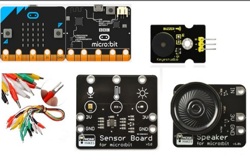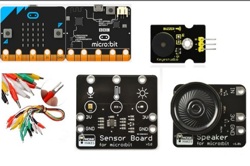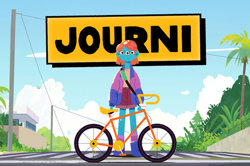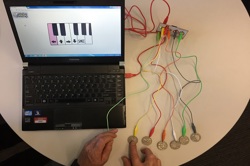What makes a good game?
This lesson sequence allows students to explore design thinking processes to investigate how games are designed, created and played. Students analyse the audience of games, understanding the importance of empathy in the design process. The learning sequence culminates in a showcase: students sharing the games they have designed with the school community.
Additional details
| Year band(s) | 5-6 |
|---|---|
| Content type | Lesson ideas |
| Format | Web page |
| Core and overarching concepts | Design thinking, Impact and interactions |
| Australian Curriculum Digital Technologies code(s) |
AC9TDI6P03
Design a user interface for a digital system
AC9TDI6P05
Implement algorithms as visual programs involving control structures, variables and input |
| Keywords | Design, Thinking, Game design, Scratch, Swift Playgrounds, Mario Bros, Sploder, Prototype, Lego Game Creator, User-centred design, Inteface, Think like an inventor |
| Integrated, cross-curriculum, special needs | STEM, Design and Technologies |
| Organisation | ESA |
| Copyright | Creative Commons Attribution 4.0, unless otherwise indicated. |
Related resources
-

Classroom ideas: Micro:bit Environmental Measurement (visual programming) (Years 5-6)
This tutorial shows the coding needed for digital solutions of some environmental issues that can be created using pseudocode and visual programming.
-

Classroom ideas: Micro:bit Environmental Measurement (visual and general-purpose programming) (Years 5-8)
Investigating environmental data with Micro:bits: This tutorial shows the coding needed for digital solutions of some environmental issues that can be created using pseudocode and visual programming.
-

Journi online road safety education program
Journi is a free online road safety education program, developed in collaboration with experts in road safety and education to help keep kids safe. Journi is comprised of 4 flexible online modules and a suite of offline educator resources including lesson plans and student activities that align to Version 9 of the Australian Curriculum.
-

Makey Makey Orchestra
In this learning sequence students explore an orchestra and use Makey Makey to make a musical instrument for an ensemble.
-

Design Thinking Process - Empathising
In this lesson students understand design thinking as a process for solving problems creatively.
-

Minecraft Lesson Plans
Find Minecraft lessons spanning primary and secondary school for use with your students.
-

Beeswax wrap project
This project creates opportunities for students to design, create, market and sell a plastic wrap alternative, and to work with a local business or community group that supplies some materials.
